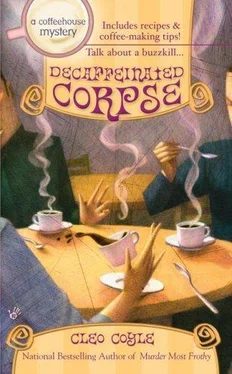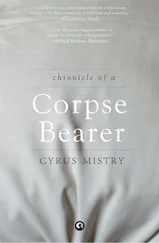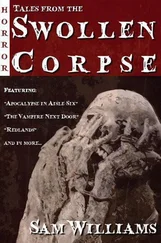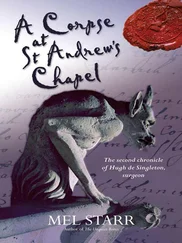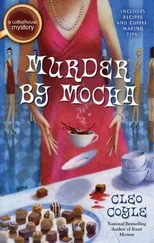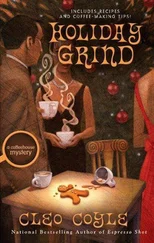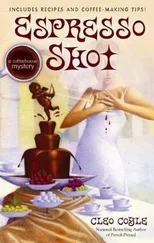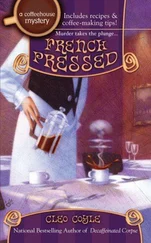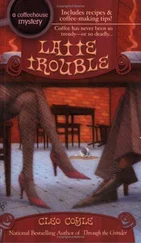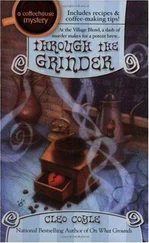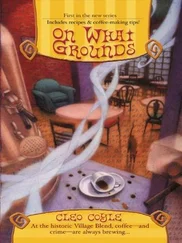Клео Коул - Decaffeinated Corpse
Здесь есть возможность читать онлайн «Клео Коул - Decaffeinated Corpse» весь текст электронной книги совершенно бесплатно (целиком полную версию без сокращений). В некоторых случаях можно слушать аудио, скачать через торрент в формате fb2 и присутствует краткое содержание. Год выпуска: 2007, ISBN: 2007, Издательство: Berkley, Жанр: Детектив, на английском языке. Описание произведения, (предисловие) а так же отзывы посетителей доступны на портале библиотеки ЛибКат.
- Название:Decaffeinated Corpse
- Автор:
- Издательство:Berkley
- Жанр:
- Год:2007
- ISBN:978-1-436-25369-7
- Рейтинг книги:5 / 5. Голосов: 1
-
Избранное:Добавить в избранное
- Отзывы:
-
Ваша оценка:
- 100
- 1
- 2
- 3
- 4
- 5
Decaffeinated Corpse: краткое содержание, описание и аннотация
Предлагаем к чтению аннотацию, описание, краткое содержание или предисловие (зависит от того, что написал сам автор книги «Decaffeinated Corpse»). Если вы не нашли необходимую информацию о книге — напишите в комментариях, мы постараемся отыскать её.
Decaffeinated Corpse — читать онлайн бесплатно полную книгу (весь текст) целиком
Ниже представлен текст книги, разбитый по страницам. Система сохранения места последней прочитанной страницы, позволяет с удобством читать онлайн бесплатно книгу «Decaffeinated Corpse», без необходимости каждый раз заново искать на чём Вы остановились. Поставьте закладку, и сможете в любой момент перейти на страницу, на которой закончили чтение.
Интервал:
Закладка:
Cleo Coyle
Decaffeinated Corpse
This book is dedicated with affection and admiration
to a brilliant sister and a fellow java lover—
Grace Alfonsi, M.D.
Acknowledgments
Special thanks to the woman and man behind the curtain—Editor Katie Day and Literary Agent John Talbot
“Even a bad cup of coffee is better than no coffee at all.”
—David LynchPrologue
IN 1862 New York instituted its first gun control law, banning rifles to discourage hunting within the city limits. Over one hundred and fifty years later, at least one hunter failed to be discouraged.
Strolling along the wet, wide sidewalk of Sixth Avenue, this particular hunter found stalking prey a simplistic pursuit. Actually overtaking it, however, was a trickier matter. Unlike mouse or bird or lesser mammal, this prey wasn’t small, and it wasn’t weak. This prey was at least six feet in height and possessed muscles enough to fight back should it feel threatened.
Street after street, the two walked, pursuer and pursued, the little covert parade taking them from quiet Perry to bustling Bleecker then picturesque Grove, by pizzerias, novelty shops, bistros, bookstores, and boutiques.
The setting sun had swept in a passing storm, killing the reassuring warmth of the clear October day. Having failed to dress for the weather, the hunter shivered. The newly purchased windbreaker and Yankee cap were thin protection against the rapidly plunging temperature. But conditions weren’t all bad. The location, at least, was an advantageous place to tail a pedestrian.
The narrow, winding lanes of this small historic district weren’t nearly as congested as other parts of Manhattan— downtown’s glass-and-steel Financial District, for instance, or the sardine-packed sidewalks of Midtown with its hordes of tourists stopping dead to take cell phone photos of twenty-story digital billboards and send them god knew where.
Here in this quaint little town within a town, genteel residents roved at their leisure, walking groomed dogs, carting home groceries, clustering on corners to chat with neighbors. All obstacles were easy enough to dart around in pursuit of the moving target, and the elegant brick row houses provided ample doorways to hide should the prey decide to double back.
But the prey never did. Not once did he glance over the shoulder of his fine suede jacket. With the compact umbrella now collapsed at his side, the dashing, accomplished, ebony-haired entrepreneur strode forward with confidence, even arrogance, like a bullet seeking a bull’s-eye. He walked the way he lived his life, unmindful of the people around him, his primary concern penetrating the path ahead.
Before one last corner was turned, toward the Village Blend, the hunter pulled on the ski mask, then shoved down all remaining reservations, along with the bill of the brand new Yankee cap. Reaching into a jacket pocket, chilled fingers found cold courage—the hard handle of an unlicensed .38.
My little leveler, the hunter thought, less than a pound of metal, but with it the balance of power is about to tip in my favor...
One
For some of my customers, Greenwich Village is more a time than a place. They remember my neighborhood when Bob Dylan was young, when Allen Ginsberg howled poetry, Andy Warhol shot avant-garde films, and Sam Shepard waited tables while scribbling award-winning plays.
A few really old school hipsters like to go back even further (with or without the help of modern chemistry), to the days when rents for a one-bedroom flat were one hundred dollars a month, instead of the current two thousand, and Edward Albee was making a living delivering telegrams while he wrote Zoo Story. They see a young Marlon Brando, in black leather cruising the cobblestone streets on his motorcycle, and James Dean whiling away his hours at the Rienze coffeehouse that was once on MacDougal.
I certainly understand the appeal of mental time travel. Back then, the Village was the “Paris of New York,” a passionate little bohemia, where hundreds of artists toiled in garret studios beside working-class immigrants. Poets scribbled all day and recited their masterpieces in cafes the same night, and young men and women, wearing black turtlenecks, argued intensely for hours about Nietzsche and Sartre over espressos and cigarettes.
These days, starving artists are living in the working class neighborhoods of Brooklyn and Queens. Any poets residing in the landmark, ivy-covered townhouses between Fourteenth and West Fourth are either drawing down trust fund annuities or temping for Wall Street law firms. And although young men and women still do argue for hours over espressos in my coffeehouse, cigarettes now carry a twenty-eight point violation by New York City’s Department of Health and Mental Hygiene.
On the other hand, the caffeinated heart of Greenwich Village hasn’t flatlined yet. Fueled by cabarets and bistros, Off-Broadway Theaters, and flamboyant gay pride, my neighborhood remains one of the most alive and eclectic parts of Manhattan. Where else can you see the 1852 house where Louisa May Alcott wrote Little Women sharing the same block as a body piercing and tattoo parlor?
Like the White Horse Tavern (founded 1880), Cherry Lane Theater (1924), Marshall Chess Club (1915), and Chumley’s pub and restaurant (1927), the Village Blend stands as part of this neighborhood’s dwindling continuity. For over one hundred years, the coffeehouse I manage has served the highest rated cup of java in the city. And when customers walk through our beveled glass door today—be they NYU college students, S&S advertising execs, Chase bank tellers, St. Vincent’s paramedics, or Seventh Avenue street performers—they expect a warm, fresh, satisfying experience in a cup.
Most are also expecting stimulation, i.e. caffeine.
This, too, is a marked change from bygone days. When struggling painters and writers stumbled through the Blend’s doors in the ’50s and ’60s, many were looking to pass out on the second floor couches. According to Madame, who’d been managing the place back then, she never minded.
The French-born, silver-haired Madame Dreyfus Allegro Dubois, herself a Village landmark, is now the Blend’s owner. Her own acquaintance with despair (having lost mother, sister, and family fortune during her flight from Nazi-occupied Paris) is almost certainly what prompted her to enable alcohol-soaked playwrights and painters to treat the Blend as a second home. Back then, even after the aroma of her bold dark roasts would sober them up in the mornings, they’d go right back to the bottle the next night. So perhaps you can understand why, when I found the body slumped in our alleyway one night, I’d thought for a moment I’d gone back in time.
The man was too well dressed to be homeless, and I flashed on those stories Madame used to tell of so many artists and writers falling victim to the bottle or the needle. But this was no longer the Village of the ’50s and ’60s. A well-dressed gentleman passed out in an alley was practically unheard of. Residents in this area might still favor wardrobes the color of outer space, but few wanted to “drop out” anymore. They didn’t want to get stoned, either.
What they primarily wanted to get was “wired,” which, in my circle of the universe, had as much to do with 24/7 connectivity as the act of sucking down premium priced Italian coffee drinks from dawn till midnight.
Like me, my customers universally loved the bean buzz, which is why, on the same night I’d found that slumped-over man in our alley, three of my best baristas were horrified when I called them together—not to observe the body, because I hadn’t found it yet, but to taste a new kind of decaffeinated coffee.
Читать дальшеИнтервал:
Закладка:
Похожие книги на «Decaffeinated Corpse»
Представляем Вашему вниманию похожие книги на «Decaffeinated Corpse» списком для выбора. Мы отобрали схожую по названию и смыслу литературу в надежде предоставить читателям больше вариантов отыскать новые, интересные, ещё непрочитанные произведения.
Обсуждение, отзывы о книге «Decaffeinated Corpse» и просто собственные мнения читателей. Оставьте ваши комментарии, напишите, что Вы думаете о произведении, его смысле или главных героях. Укажите что конкретно понравилось, а что нет, и почему Вы так считаете.
